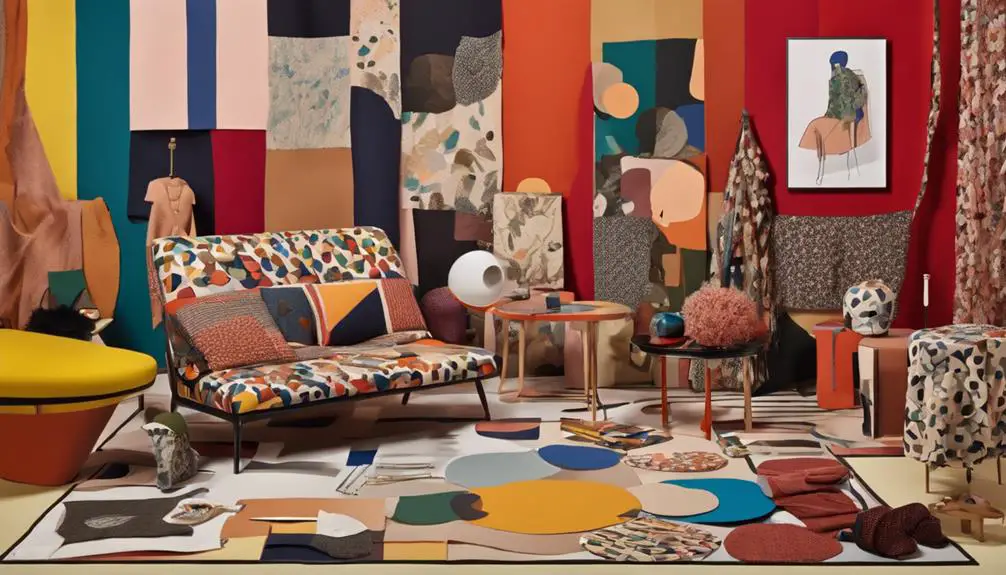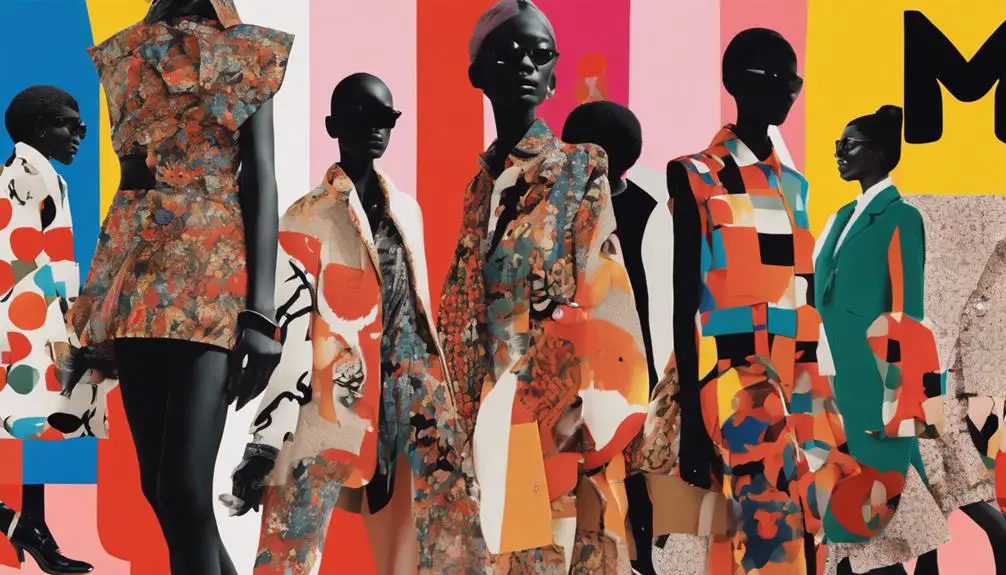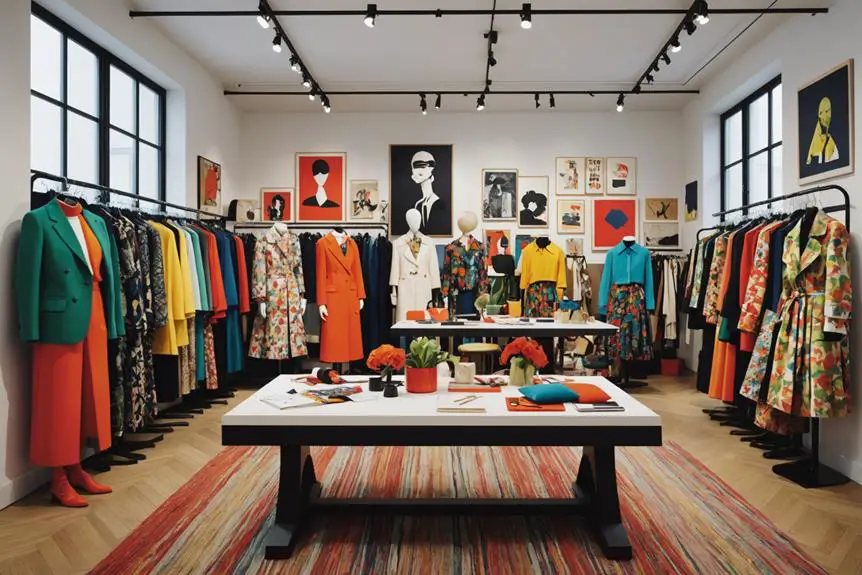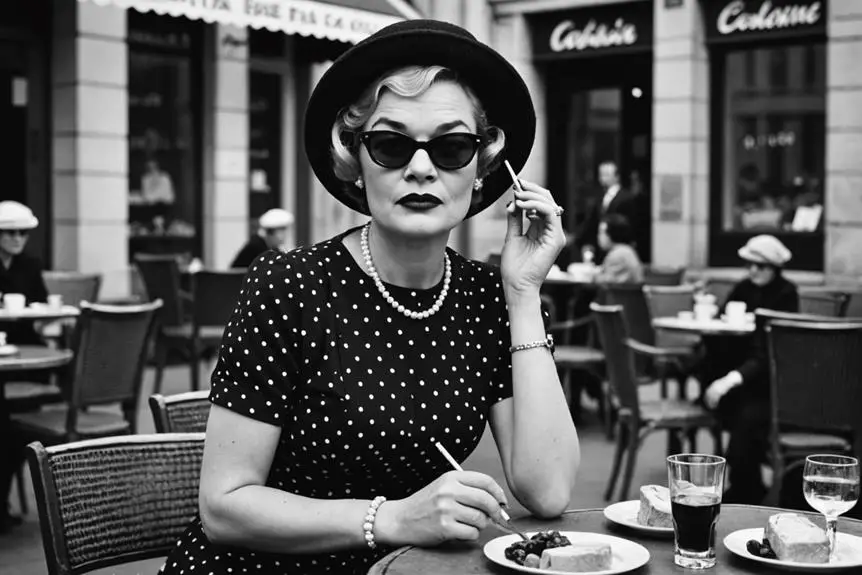The House of Marni, founded in 1994 by Consuelo Castiglioni in Milan, has been shaped by bold designers who blend art and fashion. After Castiglioni's leadership, Francesco Risso took over as creative director in 2016, shifting focus from commercial trends to artistic expression. Under his guidance, Marni became known for its vibrant colors and textures, highlighted in the "Marnifesto." Management changes have reflected the brand's evolving identity, aligning with contemporary market demands. Additionally, Marni has ventured into collaborations across various lifestyle segments. This journey has been rich and complex, inviting you to explore more intriguing facets of the brand.
Brand History

Marni's journey began in 1994 when Consuelo Castiglioni launched the brand in Milan, Italy, as a creative offshoot of her family's fur business. Initially, the focus was on producing innovative and colorful fashion that stood apart in a crowded market. Marni quickly gained a reputation for its distinctive aesthetic, which combined playful prints with artisanal techniques.
By 2000, you could start to see Marni's presence expand as it opened stores in high-end department stores, making its unique designs accessible to fashion enthusiasts worldwide. The brand's growth caught the attention of the OTB Group, and in 2012, they acquired 60% of the company. This partnership marked a turning point for Marni, as it allowed for greater resources and opportunities to innovate.
Just three years later, OTB fully acquired the brand, solidifying its place in the fashion industry. The appointment of Francesco Risso as creative director in 2016 signaled another significant change. He brought fresh ideas that revitalized the brand while still honoring its heritage.
Under his leadership, Marni expanded its offerings, launching its first women's fragrance in 2012 and planning to enter the cosmetics market with Coty in 2024. Through these developments, Marni has established itself as a key player in the fashion world, known for its unique blend of creativity and craftsmanship that captivates audiences across the globe.
Design Philosophy
Under Francesco Risso's direction, the design philosophy at Marni embraces an artistic and emotional approach to fashion. Since 2016, Risso has shifted the brand's focus from commercial trends to creative expression, making art the heart of every collection. This unique perspective prioritizes emotional aesthetics, allowing you to connect personally with the garments.
Marni is celebrated for its eclectic use of color and texture, which is evident in each piece's couture finishes. These touches enhance the sophistication of the designs, making them not just clothing but wearable art. In this environment, creativity flourishes—Risso has even banned mood boards to encourage instinctive design. The studio atmosphere resembles a radical art school where collaboration reigns supreme.
The "Marnifesto," introduced under Risso, encapsulates this design philosophy. It emphasizes intrigue and exploration, positioning Marni as a "mystery box" that invites you to uncover personal connections through fashion. Each collection reveals unexpected elements, such as the Fall-Winter 2024 line, which showcased mainly black pieces while playing with shape and texture.
This approach continuously evolves the brand's identity, ensuring that you experience something fresh with each season. In essence, Marni's design philosophy under Francesco Risso challenges traditional fashion norms. It encourages you to see clothing as a canvas for creative expression, inviting you to explore your style in a new and exciting way.
Licensing and Collaborations

Through strategic licensing agreements and creative collaborations, Marni has expanded its reach beyond fashion into diverse lifestyle categories. This growth reflects the brand's innovative spirit and commitment to unique design. One notable partnership is with Coty, which will launch a cosmetics line in 2026, showcasing Marni's flair for color and creativity in beauty products.
In the domain of children's fashion, Marni initially collaborated with Spazio Sei Fashion Group in 2011, but now works with Brave Kid to create trendy pieces for ages 2-12. This shift highlights Marni's desire to engage a younger audience with its playful aesthetics.
Marni also made waves in the eyewear market by entering into a licensing agreement with Marchon Eyewear in 2015, later switching to a partnership with Retrosuperfuture in 2021. This move allowed Marni to infuse its distinctive style into fashionable eyewear, reaching new customers.
Additionally, Marni ventured into home decor through a collaboration with The Rug Company, introducing rugs that embody the brand's eclectic character. Other licensing initiatives include a tableware collection with Serax and a wallpaper series with LondonArt, demonstrating Marni's commitment to innovative design across various categories.
These licensing agreements and collaborations not only enrich Marni's product offerings but also allow the brand to maintain its unique identity while appealing to a wider audience. Each partnership reflects a dedication to creativity and quality that defines the essence of Marni.
Management Changes
Recent management changes at Marni have played an essential role in shaping the brand's trajectory. From 2018 to 2019, Stefano Biondo served as CEO, initiating a leadership shift that marked the beginning of Marni's identity redefinition. Following him, Barbara Calò took the reins in 2019, guiding the brand until 2024. During her tenure, she focused on significant creative and strategic developments that aligned with Marni's evolving vision.
In 2024, Stefano Rosso was appointed as the new CEO, signaling Marni's continuous adaptation to market demands. These management changes mirror the brand's creative shifts, particularly under the guidance of creative director Francesco Risso, who's led since 2016. Risso's unique vision has been instrumental in establishing a distinct brand identity that resonates with luxury consumers.
These leadership shifts are more than just administrative moves; they reflect a commitment to enhancing Marni's positioning in the competitive luxury market. By fostering a collaborative design environment, the brand is set to innovate and expand its appeal.
Each management change has been strategically timed to coincide with pivotal moments in Marni's creative journey, ensuring consistency in messaging and direction.
As you explore Marni's evolution, you'll see how these management changes have paved the way for a dynamic future, emphasizing the brand's dedication to artistry and luxury. The interplay between leadership and creativity continues to shape Marni's legacy, making it a brand to watch closely in the evolving fashion landscape.
Cultural Impact and Controversies

Fashion brands often walk a tightrope when it comes to cultural representation, and Marni's experience with its 2020 Jungle Mood campaign is a prime example. The campaign sparked backlash due to its portrayal of a Black man with chains, raising serious questions about cultural sensitivity. This incident highlighted the need for brands to carefully consider how they depict cultural themes in their marketing.
In response to the controversy, Marni issued a public apology, acknowledging the impact of their choices and emphasizing their commitment to diversity and inclusion. This moment illustrated a broader trend in the fashion industry, where brands are increasingly held accountable for cultural representations. Consumers demand authenticity and sensitivity, pushing companies like Marni to reevaluate their creative processes.
Marni's dedication to addressing public concerns showcases their desire to maintain brand integrity. The company recognized that they must strike a balance between creative expression and cultural awareness. Moving forward, Marni has pledged to foster a more inclusive approach in their advertising, ensuring that they respect cultural nuances and avoid missteps.
The Jungle Mood campaign serves as a reminder of the delicate nature of cultural representation in fashion. As you explore the evolving landscape of the industry, keep in mind how brands like Marni address controversies and endeavor for greater cultural sensitivity.




